 As the warm summer days give way to crisp autumn nights, there’s no better time to round up the family or loved ones and head off to one of several famous Chicago fall festivals. Whether you’re with your family, significant other, or just flying solo, there are many great autumn festivals to choose from.
As the warm summer days give way to crisp autumn nights, there’s no better time to round up the family or loved ones and head off to one of several famous Chicago fall festivals. Whether you’re with your family, significant other, or just flying solo, there are many great autumn festivals to choose from.
Here are our top five picks for best fall Chicago fall festival:
Apple Fest in Lincoln Square
Fall is the traditional harvest time for apples. Apple cider, applesauce, apple candy, and anything apple-related will be sold at the Lincoln Square Ravenswood Apple Fest. This family-friendly event features handcrafted wares, live music, and a zone for children’s activities. It takes place in early October and is a great time to stock up on apple products before the season is over.
When: October 6th and 7th from 9 am to 8 pm (Sat), and 9 am to 6 pm (Sun)
Where: Lincoln Avenue (In-between Lawrence and Eastwood), Lincoln Square
Cost: $5 donation (suggested)
Shades of Autumn Pumpkin Festival
This annual event is so big that it can’t be completed in one weekend, which is good because the festival last all fall time long. There are more than 25 family-friendly things to do such as a petting zoo, pumpkin picking, and traditional horse-drawn hayrides. There’s also a pumpkin cannon, apple cider donuts, hamster track, semi-truck slide, and an event called “trikes for tikes.”
There’s so much to do and see that you can make it a two-day or multi-weekend affair. The Shades of Autumn Pumpkin Festival celebrates everything pumpkin and is a great place to bring the little ones to pick out the perfect fall time gourd to take back home and carve into a scary face.
When: Starts Sept. 8th and runs through October 31st.
Where: Stade’s Farm & Market 3709 W Miller Rd., McHenry
Cost: $15 (all ages)
Harvest Pow Wow
The Harvest Pow Wow at Naper Settlement is a great way to introduce your kids to Native American culture. The event celebrates Native American heritage with traditional costumes, dancing, cultural demonstrations, children’s games, and arts and crafts. Learn how the Native Americans prepared for and survived the freezing Chicago winters.
The Pow Wow is located in Naperville, which is a 40-minute ride outside downtown Chicago. There will also be food booths selling traditional Native American food, a bird of prey exhibit, and Native American dancers decked out in full regalia. This annual cultural event is a must-do for kids of all ages.
When: September 22nd and 23rd 11 am to 5 pm.
Where: Naper Settlement, 523 S. Webster Street, Naperville, IL 60540
Cost: $12 adults and $7 ages 3 to 12.
Donley’s Wild West Town Fall Festival
Experience out-west in the Midwest at this annual fall festival that celebrates both the seasonal change as well as everything Wild Wild West related. You and your little gunslingers can pan for (fake) gold, ride in a vintage canoe just like the pioneers of yesteryear and check out a Wild West show.
There’s also a spooky (but not super scary) tunnel train ride, kid’s activities, and even a pumpkin painting station. If you’re tired of traditional fall festivals, you shouldn’t miss this one as the Wild Wild West theme is family fun for all. You and your kids can even dress up and mix and mingle with the other cowboys and Indians.
When: Weekends (only) Starts Sept 22nd and runs through Oct. 28th from 10 am to 6 pm.
Where: 8512 S. Union Rd., Union
Cost: $17 and free for children under the age of 2.
Garfield Farm Harvest Days
We’ve saved the best for last as the Harvest Days at Garfield Farm is one event you shouldn’t miss. The Garfield Farm is the only intact Illinois prairie farmstead that’s in existence. It was built in the 1840’s and is considered to be a living history museum.
Come see how the earliest inhabitants of the Chicago area lived, worked, and played.
Learn how they celebrated the fall harvest with live demonstrations of farm and household skills, music from the period, and various treats. Attending this event will give your kids the opportunity to see how life was lived before the internet, Facebook, and video games.
When: October 7th 11:30 am to 4 pm
Where: Garfield Farm Illinois 38/Garfield Rd., LaFox
Cost: Adults $6; Age 12 and under $3
Fall Time in Chicago
There’s no excuse not to attend at least one of these festivals this fall season. The weather will be cool, but not cold, and a nice fall crisp will be in the air. Even though these events are family-friendly, anyone can attend and have a good time. If you’re looking for the perfect date night that won’t break the bank, look no further than one of these five fall time festivals. If you’re planning on attending, make plans soon as the fun fall times won’t last!
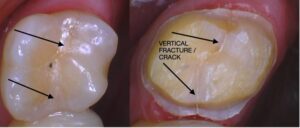
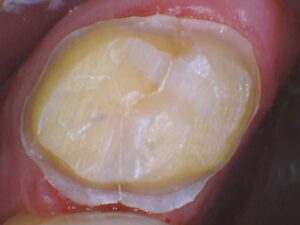
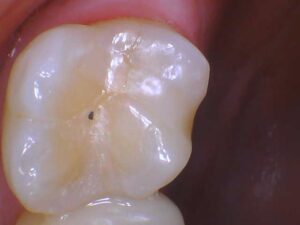

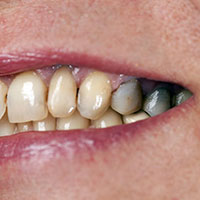 It’s no big secret that brushing and flossing your teeth on a daily basis can help prevent all sorts of oral diseases such as gingivitis and tooth decay. Why then have
It’s no big secret that brushing and flossing your teeth on a daily basis can help prevent all sorts of oral diseases such as gingivitis and tooth decay. Why then have  Water Tower Place is located smack dab in the middle of the Magnificent Mile, a 13-block stretch of businesses, entertainment, and cultural places of interest. It is the premier commercial district in downtown Chicago and home to many upscale luxury boutiques, fashion outlets, restaurants, and hotels.
Water Tower Place is located smack dab in the middle of the Magnificent Mile, a 13-block stretch of businesses, entertainment, and cultural places of interest. It is the premier commercial district in downtown Chicago and home to many upscale luxury boutiques, fashion outlets, restaurants, and hotels. As the warm summer days give way to crisp autumn nights, there’s no better time to round up the family or loved ones and head off to one of several famous Chicago fall festivals. Whether you’re with your family, significant other, or just flying solo, there are many great autumn festivals to choose from.
As the warm summer days give way to crisp autumn nights, there’s no better time to round up the family or loved ones and head off to one of several famous Chicago fall festivals. Whether you’re with your family, significant other, or just flying solo, there are many great autumn festivals to choose from.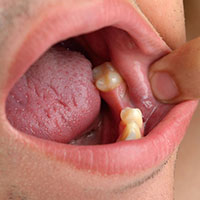 There are very few things in life more unsettling than losing an adult tooth. One minute you’re biting down on dinner, the next you feel a “cruuuunch” inside your mouth along with the accompanying sensation that you just bit down on something very hard.
There are very few things in life more unsettling than losing an adult tooth. One minute you’re biting down on dinner, the next you feel a “cruuuunch” inside your mouth along with the accompanying sensation that you just bit down on something very hard. Oral lichen planus is a condition that negatively affects the mucous membrane in your mouth. It is chronic (meaning it comes and goes over time) and can appear as red swollen tissues, open sores, or white patches. In some cases, it could cause mild discomfort, itchiness, or a burning sensation.
Oral lichen planus is a condition that negatively affects the mucous membrane in your mouth. It is chronic (meaning it comes and goes over time) and can appear as red swollen tissues, open sores, or white patches. In some cases, it could cause mild discomfort, itchiness, or a burning sensation. Regularly brushing and flossing your teeth are essential for good dental health. Your teeth stay white, your breath smells great, and most importantly it helps prevent any major dental issues down the road.
Regularly brushing and flossing your teeth are essential for good dental health. Your teeth stay white, your breath smells great, and most importantly it helps prevent any major dental issues down the road. Wisdom teeth are a set of molars in the very back of the mouth. They usually come in your late teens or early 20’s. For a lucky few people, their wisdom teeth are properly aligned and healthy. For the rest of us, our wisdom teeth come in misaligned and in some cases – growing in sideways deep beneath the gum line.
Wisdom teeth are a set of molars in the very back of the mouth. They usually come in your late teens or early 20’s. For a lucky few people, their wisdom teeth are properly aligned and healthy. For the rest of us, our wisdom teeth come in misaligned and in some cases – growing in sideways deep beneath the gum line. If you’re like most people, your parents and your dentist have repeatedly told you that you need to change your toothbrush every so often. The keyword being “every so often” is somewhat vague and subjective. We’re going to look at exactly what kind of toothbrush you should buy as well as clear up any misconceptions regarding the timeline to change your toothbrush.
If you’re like most people, your parents and your dentist have repeatedly told you that you need to change your toothbrush every so often. The keyword being “every so often” is somewhat vague and subjective. We’re going to look at exactly what kind of toothbrush you should buy as well as clear up any misconceptions regarding the timeline to change your toothbrush. Ensuring your baby sees a dentist early in life is good practice for setting the stage for good oral health for the rest of your child’s life. Babies are born with all of their primary teeth already in their gums. Babies typically start to teethe between the 6 months of age and one year. While baby teeth erupt at different times for every child, they all catch up to one another by the time they are teenagers and usually have all of their adult teeth by their adolescent years. But before you start thinking about braces and retainers, let’s look at when you should start bringing your baby to the dentist, what you can expect, and how to plan for subsequent follow-up visits with your baby’s dentist.
Ensuring your baby sees a dentist early in life is good practice for setting the stage for good oral health for the rest of your child’s life. Babies are born with all of their primary teeth already in their gums. Babies typically start to teethe between the 6 months of age and one year. While baby teeth erupt at different times for every child, they all catch up to one another by the time they are teenagers and usually have all of their adult teeth by their adolescent years. But before you start thinking about braces and retainers, let’s look at when you should start bringing your baby to the dentist, what you can expect, and how to plan for subsequent follow-up visits with your baby’s dentist.

 Forget the gingerbread men, the fruitcakes, the candy canes and the champagne. This year, give your loved ones the gifts that will undo the effects of unhealthy holiday eating and drinking! Fancy toothbrushes and whitening treatments can be pricey so if you’re feeling generous this holiday season, give someone a gift that will keep giving: the gift of healthy teeth and gums!
Forget the gingerbread men, the fruitcakes, the candy canes and the champagne. This year, give your loved ones the gifts that will undo the effects of unhealthy holiday eating and drinking! Fancy toothbrushes and whitening treatments can be pricey so if you’re feeling generous this holiday season, give someone a gift that will keep giving: the gift of healthy teeth and gums! Dental hypersensitivity, also known as sensitive teeth, happens because of receding gums and/or because the enamel protecting the teeth has somehow become thinner. Brushing too hard can push back the gums and expose the roots of teeth, while acidic food and drinks, such as wine, can weaken the structure of the enamel and cause sensitivity. You know your teeth are sensitive when it’s painful to consume hot or cold foods and beverages.
Dental hypersensitivity, also known as sensitive teeth, happens because of receding gums and/or because the enamel protecting the teeth has somehow become thinner. Brushing too hard can push back the gums and expose the roots of teeth, while acidic food and drinks, such as wine, can weaken the structure of the enamel and cause sensitivity. You know your teeth are sensitive when it’s painful to consume hot or cold foods and beverages. Flossing has been making headlines recently thanks to the U.S. departments of Health and Human Services Agriculture’s Dietary Guidelines for Americans. The most recently released guidelines did not include flossing, which was once a recommended activity for daily health. But does this mean
Flossing has been making headlines recently thanks to the U.S. departments of Health and Human Services Agriculture’s Dietary Guidelines for Americans. The most recently released guidelines did not include flossing, which was once a recommended activity for daily health. But does this mean  Think
Think  Babies are incredibly cute - especially your own baby. But what happens when your baby’s teeth start coming through and you notice a big gap between their front teeth? You may start to wonder if there’s something wrong with your baby’s mouth, or if you did something wrong. Before you rush your baby to the dentist, read this article. It’s likely that your baby’s gaps are completely normal! In fact, they can actually be a good sign.
Babies are incredibly cute - especially your own baby. But what happens when your baby’s teeth start coming through and you notice a big gap between their front teeth? You may start to wonder if there’s something wrong with your baby’s mouth, or if you did something wrong. Before you rush your baby to the dentist, read this article. It’s likely that your baby’s gaps are completely normal! In fact, they can actually be a good sign. The wonderful thing about being early for a Water Tower Dental Care appointment is our location! Since we’re located in what many consider Chicago’s best shopping mall, you don’t have to succumb to boredom while waiting in a dental office for your name to be called. Instead, we encourage you to go out and explore Water Tower Place and Chicago’s Magnificent Mile!
The wonderful thing about being early for a Water Tower Dental Care appointment is our location! Since we’re located in what many consider Chicago’s best shopping mall, you don’t have to succumb to boredom while waiting in a dental office for your name to be called. Instead, we encourage you to go out and explore Water Tower Place and Chicago’s Magnificent Mile! Teeth are called pearly whites for a reason. They should be white - not see-through. Along with affecting your appearance, translucent teeth can also signal that something more serious is going on with your teeth. Teeth typically begin to appear translucent when enamel is thinning.
Teeth are called pearly whites for a reason. They should be white - not see-through. Along with affecting your appearance, translucent teeth can also signal that something more serious is going on with your teeth. Teeth typically begin to appear translucent when enamel is thinning. Enamel Remineralization
Enamel Remineralization Many people substitute honey for sugar because of its
Many people substitute honey for sugar because of its  When it comes to your social and professional life,
When it comes to your social and professional life, 
 Over the years,
Over the years,  Everyone in Chicago knows that the city’s winter weather can be hard on your commute, skin and nose. But extremely cold weather can also affect your teeth and mouth. Many Chicagoans experience uncomfortable sensations or even extreme pain in their mouth while in icy weather. Let’s take a look at why that happens and what you can do to keep your teeth and mouth feeling great all winter long!
Everyone in Chicago knows that the city’s winter weather can be hard on your commute, skin and nose. But extremely cold weather can also affect your teeth and mouth. Many Chicagoans experience uncomfortable sensations or even extreme pain in their mouth while in icy weather. Let’s take a look at why that happens and what you can do to keep your teeth and mouth feeling great all winter long! Keeping your mouth healthy and looking good isn’t limited to what’s inside of it. Though teeth and gums get the spotlight in most dentist offices, cold sores can be even more unsightly and irritating than any issue inside of your mouth. Thankfully, dentists have the technology to get rid of the viruses that cause cold sores on your lips and around your mouth in just minutes. This technology comes in the form of lasers.
Keeping your mouth healthy and looking good isn’t limited to what’s inside of it. Though teeth and gums get the spotlight in most dentist offices, cold sores can be even more unsightly and irritating than any issue inside of your mouth. Thankfully, dentists have the technology to get rid of the viruses that cause cold sores on your lips and around your mouth in just minutes. This technology comes in the form of lasers. When it comes to taking care of your teeth, there’s a lot more you can do than just brushing and flossing. In fact, those are just the first two steps to keeping your teeth healthy. Adding oral probiotics to your teeth-cleaning routine will help to ensure that you keep cavities away and an attractive smile going.
When it comes to taking care of your teeth, there’s a lot more you can do than just brushing and flossing. In fact, those are just the first two steps to keeping your teeth healthy. Adding oral probiotics to your teeth-cleaning routine will help to ensure that you keep cavities away and an attractive smile going. When it comes to taking care of our teeth, we generally hear the same kind of advice all of the time: brush and floss everyday and don’t eat too much candy. While this advice is extremely important, there are a lot of additional ways to keep your teeth healthy as well. We asked our dentists at Water Tower Dental Care to share some tips for taking care of your teeth that you probably haven’t heard before. Here are 6 unusual teeth tips straight from our dentists.
When it comes to taking care of our teeth, we generally hear the same kind of advice all of the time: brush and floss everyday and don’t eat too much candy. While this advice is extremely important, there are a lot of additional ways to keep your teeth healthy as well. We asked our dentists at Water Tower Dental Care to share some tips for taking care of your teeth that you probably haven’t heard before. Here are 6 unusual teeth tips straight from our dentists. It can be pretty alarming to wake up and notice that your gums are getting darker. After all, they’re a huge part of your smile. Gum discoloration can be a natural occurrence, or they can be a sign of serious health problems that need to be addressed immediately. Thankfully, there are steps you can take to treat your discolored or black gums and get them looking healthy again,
It can be pretty alarming to wake up and notice that your gums are getting darker. After all, they’re a huge part of your smile. Gum discoloration can be a natural occurrence, or they can be a sign of serious health problems that need to be addressed immediately. Thankfully, there are steps you can take to treat your discolored or black gums and get them looking healthy again,  When it comes to choosing dental floss, there are a lot of options out there. Picking the right type of floss will make your flossing experience easy, smooth, fast and effective. We here at Water Tower Dental Care are here to help break down all of the different choices so that you can choose the best floss for your teeth.
When it comes to choosing dental floss, there are a lot of options out there. Picking the right type of floss will make your flossing experience easy, smooth, fast and effective. We here at Water Tower Dental Care are here to help break down all of the different choices so that you can choose the best floss for your teeth. Many people have serious phobias of doctors and dentists. Often it comes from past experiences that might not have gone over so well. Other times the fear lacks reason. Either way, there are ways to overcome the fear of the dentist so you can commit yourself to appointments and make sure your teeth are in great health.
Many people have serious phobias of doctors and dentists. Often it comes from past experiences that might not have gone over so well. Other times the fear lacks reason. Either way, there are ways to overcome the fear of the dentist so you can commit yourself to appointments and make sure your teeth are in great health. We all love the holidays, but it’s important to be aware of your oral health during these festive times. Taking care of your teeth and gums during the holidays is simple. All it includes is avoiding a few nasty habits and being aware of the treats that can be most harmful to your teeth. Here are our four dental health tips for the holiday season.
We all love the holidays, but it’s important to be aware of your oral health during these festive times. Taking care of your teeth and gums during the holidays is simple. All it includes is avoiding a few nasty habits and being aware of the treats that can be most harmful to your teeth. Here are our four dental health tips for the holiday season.
 When it comes to choosing a toothbrush, you definitely have some options. A pharmacy often dedicates a whole aisle to toothbrushes, giving you a long list of choices. One of the hardest decisions when choosing a toothbrush can be between a manual toothbrush and an electric toothbrush. Many question between a manual and an electric toothbrush, which is better? However, the answer isn’t necessarily which is better, but which is right for you. Though electric toothbrushes technically clean your teeth more effectively, they may not be right for everyone.
When it comes to choosing a toothbrush, you definitely have some options. A pharmacy often dedicates a whole aisle to toothbrushes, giving you a long list of choices. One of the hardest decisions when choosing a toothbrush can be between a manual toothbrush and an electric toothbrush. Many question between a manual and an electric toothbrush, which is better? However, the answer isn’t necessarily which is better, but which is right for you. Though electric toothbrushes technically clean your teeth more effectively, they may not be right for everyone.







 There are many side effects to pregnancy. We all have heard of morning sickness or the late night cravings that some women can get. However, pregnancies can also bring another change in a woman’s body: a heightened risk of gingivitis.
There are many side effects to pregnancy. We all have heard of morning sickness or the late night cravings that some women can get. However, pregnancies can also bring another change in a woman’s body: a heightened risk of gingivitis. A burnt mouth: we’ve all done it before, and we all know how awful it feels. From a slice a pizza that just came from the oven, to a steaming cup of coffee, we’ve all experienced the awful pain. The sensitivity that your mouth must endure for the next day is often much more annoying than the original burn. There are a few remedies that can help sooth the pain, and make it go away a little faster. Here our tips.
A burnt mouth: we’ve all done it before, and we all know how awful it feels. From a slice a pizza that just came from the oven, to a steaming cup of coffee, we’ve all experienced the awful pain. The sensitivity that your mouth must endure for the next day is often much more annoying than the original burn. There are a few remedies that can help sooth the pain, and make it go away a little faster. Here our tips. Painful and intrusive, the canker sore is a annoyance that no person ever wants. Between the ages of 10 and 20, you have a high probability you’ll get a few canker sores a year that will last up to a week at a time. For adults, complex canker sores are always a possibility, though more rare. So what are canker sores, why do we get them, how do we find ourselves some relief?
Painful and intrusive, the canker sore is a annoyance that no person ever wants. Between the ages of 10 and 20, you have a high probability you’ll get a few canker sores a year that will last up to a week at a time. For adults, complex canker sores are always a possibility, though more rare. So what are canker sores, why do we get them, how do we find ourselves some relief?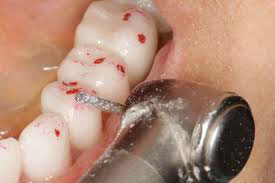 If you are experiencing, headaches, ear problems, clicking or grating jaw, mouth discomfort, and looseness of teeth, or any combination of these symptoms, you may be having an issue with your TMJ. If that’s the case, your dentist might recommend occlusal adjustments. What are occlusal adjustments? It is a method to reshape the surface of your teeth to create an even and harmonious relationship between the top and bottom teeth. To understand why this needs to happen though, we must dig a little deeper.
If you are experiencing, headaches, ear problems, clicking or grating jaw, mouth discomfort, and looseness of teeth, or any combination of these symptoms, you may be having an issue with your TMJ. If that’s the case, your dentist might recommend occlusal adjustments. What are occlusal adjustments? It is a method to reshape the surface of your teeth to create an even and harmonious relationship between the top and bottom teeth. To understand why this needs to happen though, we must dig a little deeper.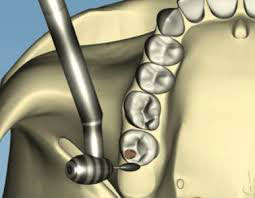 While shaving down teeth can seem like an easy option, it’s an irreversible procedure, and if the adjustments aren’t made properly, you could find yourself in a troubling situation. At Water Tower Dental, we offer non-damaging therapy options that can help fix the TMD condition. Using a Transcutaneous Electrical Neural Stimulation, or TENS, unit, we are able to asses any neuromuscular problems. While many doctors focus on the misplacement of the jaw, scientific developments have revealed that some problems associated with teeth, mouth, and jaws are actually caused by improper functions of the muscles and nerves. Using the TENS unit, we are able to find ideal positioning of the jaw.
While shaving down teeth can seem like an easy option, it’s an irreversible procedure, and if the adjustments aren’t made properly, you could find yourself in a troubling situation. At Water Tower Dental, we offer non-damaging therapy options that can help fix the TMD condition. Using a Transcutaneous Electrical Neural Stimulation, or TENS, unit, we are able to asses any neuromuscular problems. While many doctors focus on the misplacement of the jaw, scientific developments have revealed that some problems associated with teeth, mouth, and jaws are actually caused by improper functions of the muscles and nerves. Using the TENS unit, we are able to find ideal positioning of the jaw.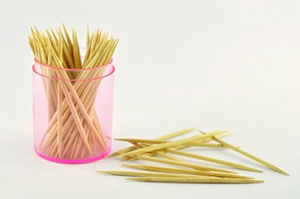 Toothpicks have been one of the most widely used tools for hygiene in the world. These simple pieces of carved wood help us free those annoying food particles stuck between our teeth after a rousing meal. But are toothpicks good for your teeth? Doesn’t the act of poking and prodding at your teeth and gums seem slightly wrong? If you have that inclination, it’s because you’re right. While toothpicks can be a helpful tool, overuse can be harmful and should call alarm to a bigger concern.
Toothpicks have been one of the most widely used tools for hygiene in the world. These simple pieces of carved wood help us free those annoying food particles stuck between our teeth after a rousing meal. But are toothpicks good for your teeth? Doesn’t the act of poking and prodding at your teeth and gums seem slightly wrong? If you have that inclination, it’s because you’re right. While toothpicks can be a helpful tool, overuse can be harmful and should call alarm to a bigger concern.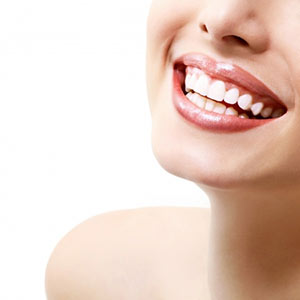 While listing out your New Years resolutions this time around, consider adding a few resolutions for your health, and specifically, your mouth. Keeping your teeth, gums, and tongue in good shape can help you in the years to come. Practicing good oral hygiene will help you look and feel good, along with allow you to avoid major dental surgeries and complications in the future. Here are 5 tips you can easily make into New Years resolutions for a better, healthier smile.
While listing out your New Years resolutions this time around, consider adding a few resolutions for your health, and specifically, your mouth. Keeping your teeth, gums, and tongue in good shape can help you in the years to come. Practicing good oral hygiene will help you look and feel good, along with allow you to avoid major dental surgeries and complications in the future. Here are 5 tips you can easily make into New Years resolutions for a better, healthier smile.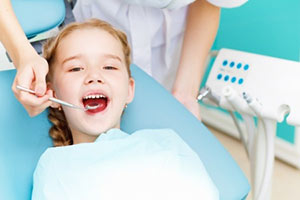 When it comes to your child, there are many firsts that must be determined. A very important first for a child is the first time they visit the dentist. At Water Tower Dental, we make sure that this fist visit is a great experience that helps a child learn to love cleaning their teeth and visiting the dentist for years to come. But when exactly should your child start to visit the dentist?
When it comes to your child, there are many firsts that must be determined. A very important first for a child is the first time they visit the dentist. At Water Tower Dental, we make sure that this fist visit is a great experience that helps a child learn to love cleaning their teeth and visiting the dentist for years to come. But when exactly should your child start to visit the dentist?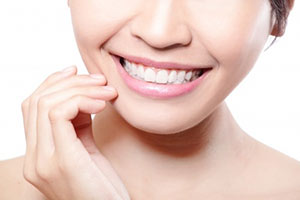 Of course it’s no question that the smartest practices for healthy teeth are brushing and flossing everyday. However, there are several more tips that can help you keep your teeth and gums healthy, and breath fresh. Today we’d like to discuss a few more smart practices for healthier teeth.
Of course it’s no question that the smartest practices for healthy teeth are brushing and flossing everyday. However, there are several more tips that can help you keep your teeth and gums healthy, and breath fresh. Today we’d like to discuss a few more smart practices for healthier teeth.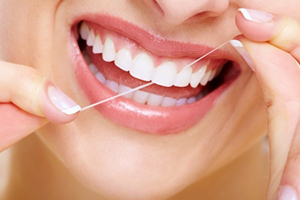 An interesting question that arises in our office from time to time from concerned patients is if they can potentially floss too much and cause damage to their teeth. Flossing is one of the most important oral hygiene practices a person should perform. It helps clear out plaque and bacteria build up between the teeth and gums that a normal toothbrush cannot reach. It may be surprising to read that you can, in fact, floss too much. However, we encourage you to read further to understand exactly what that means.
An interesting question that arises in our office from time to time from concerned patients is if they can potentially floss too much and cause damage to their teeth. Flossing is one of the most important oral hygiene practices a person should perform. It helps clear out plaque and bacteria build up between the teeth and gums that a normal toothbrush cannot reach. It may be surprising to read that you can, in fact, floss too much. However, we encourage you to read further to understand exactly what that means.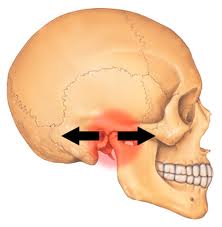 The Temporomandibular Joint, or (TMJ) is a hinge joint that connects your lower jaw to the bone of the skull located just in front of the ears. This joint allows the jaw to move freely so you can talk, chew, yawn, etc. The muscles that attach to the joint help control the position of the jaw and its movements. Often, many confuse TMJ with the term TMD, Temporomandibular Joint Disorder. Whether you refer to it one way or the other, TMD is a painful and often frustrating condition that, if not treated, can cause serious issues.
The Temporomandibular Joint, or (TMJ) is a hinge joint that connects your lower jaw to the bone of the skull located just in front of the ears. This joint allows the jaw to move freely so you can talk, chew, yawn, etc. The muscles that attach to the joint help control the position of the jaw and its movements. Often, many confuse TMJ with the term TMD, Temporomandibular Joint Disorder. Whether you refer to it one way or the other, TMD is a painful and often frustrating condition that, if not treated, can cause serious issues.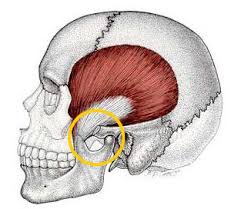 In the most severe cases, TMD can drastically change your life and become a very debilitating problem. The disc within the jaw joint can slip out of its position, most likely during sleep. When the person awakes, they discover that their jaw will not open more than a few millimeters. The person can’t open their mouth to eat, talk, or even brush their teeth.
In the most severe cases, TMD can drastically change your life and become a very debilitating problem. The disc within the jaw joint can slip out of its position, most likely during sleep. When the person awakes, they discover that their jaw will not open more than a few millimeters. The person can’t open their mouth to eat, talk, or even brush their teeth.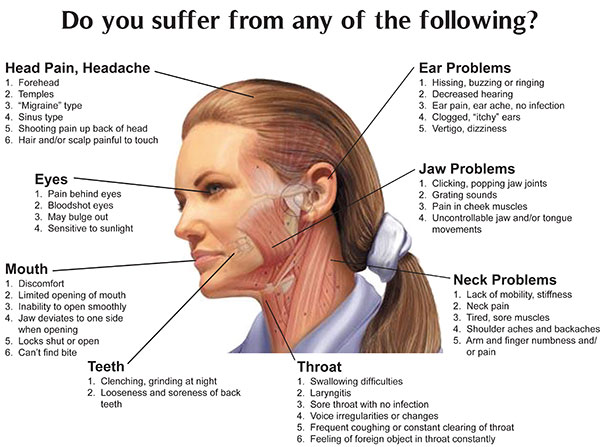
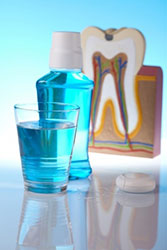 If you're looking for that extra step in oral hygiene to help kill bacteria and freshen breath, look no further than mouthwash. There are three leading types of mouthwash that all serve different purposes depending on your needs. Here's a helpful guide to educate you on what you should look for in a mouthwash and why.
If you're looking for that extra step in oral hygiene to help kill bacteria and freshen breath, look no further than mouthwash. There are three leading types of mouthwash that all serve different purposes depending on your needs. Here's a helpful guide to educate you on what you should look for in a mouthwash and why.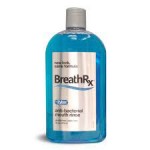
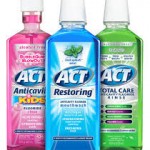
 What Is Sedation Dentistry?
What Is Sedation Dentistry? A large percentage of Americans suffer from bad breath. While good oral hygiene can help keep bad breath at bay, sometimes a mouth needs to take further measures to help keep it from smelling too bad. Today we'd like to discuss a few natural ways to help reduce bad smelling breath.
A large percentage of Americans suffer from bad breath. While good oral hygiene can help keep bad breath at bay, sometimes a mouth needs to take further measures to help keep it from smelling too bad. Today we'd like to discuss a few natural ways to help reduce bad smelling breath.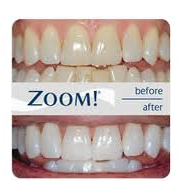 For every great, reliable method for tooth care, there are dozens of imitators and "fast-acting" methods that try to cash in on new trends. The process of
For every great, reliable method for tooth care, there are dozens of imitators and "fast-acting" methods that try to cash in on new trends. The process of 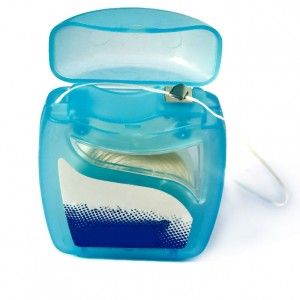 Flossing is an important part of dental hygiene. One should consider it just as beneficial as brushing their teeth in the fight to prevent plaque, cavities, and gingivitis. However, from last week's post:
Flossing is an important part of dental hygiene. One should consider it just as beneficial as brushing their teeth in the fight to prevent plaque, cavities, and gingivitis. However, from last week's post: 




 Website Powered by Sesame 24-7™
Website Powered by Sesame 24-7™